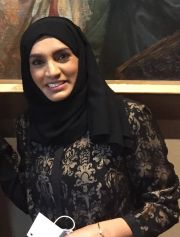Digital storytelling refers to the use of real-life experiences, stories and adventures combining narrative with digital content. This can include images, sounds, and videos to create a short movie, typically with a strong emotional component to help engage learners in learning. Digital storytelling is a powerful medium for teaching because it can increase engagement and retention of learning, and has been used in medical education.
The central proposal for narrative learning theory is that: “The frames of meaning within which learning occurs are constructions which grow out of our impulse to emplot or thematise our lives.”
Some of my most lasting memories of what I learned in my emergency medicine residency training came from educators who used the power of narrative to teach us. I attribute it to the reason why I still remember so much of my PGY1 basic emergency approaches, when so much else is hazy. I remember when one of my instructors shared a story about a patient with supraventricular tachycardia. The resident decided to give him electrical shock without sedation or proper explanation, and while shocking the patient started to scream in fear of the medical procedure. That particular story echoes in my mind emphasizing the importance of pre-shock sedation in conscious patient and the importance of clear and effective communication between provider team, provider, and patient.
Some learning theorists believe that as a pedagogical technique, storytelling can be effectively applied to nearly any subject. Constructing a narrative and communicating it effectively requires the storyteller to think carefully about the topic and consider the audience’s perspective.
A Brazilian study among undergraduate medical students concluded that teaching cellular biology through a cooperative role-play environment was preferred and led to equal or higher retention than traditional lecture-style classes. Compared to the traditional one-way knowledge transmission, storytelling maintained the involvement of the entire class with more student interaction leading to enhanced outcomes through more self-actualization, short and long-term retention of information, and the ability to correspond with prior life experiences in real-time.
A digital story usually begins with a script. The storyteller then gathers the media to support the ideas and emotions in that script, including audio and/or visual effects. Then the storyteller edits the media to develop a final digital story through the creation of a video of two to four minutes in length.
Throughout the years, people have been using stories to convey their beliefs, values and experiences. Using digital storytelling is just a modern representation of an old yet effective method of teaching and learning. The acceptance of such method from the audience is expected to be higher as it respects learner’s individuality and digital experiences but at the same time challenges their reflective experiences.
What are some challenges inherent to digital storytelling?
The multimedia technologies used in digital storytelling can be extensive, requiring considerable support and storage space for programs or institutions. Moreover, faculty and students both need to be aware of intellectual property concerns which may arise if digital stories include copyrighted images, music, videos, or text.
For any teaching tool to be an important part of education it must offer what other tools lack, including an effective integration of technology with learning, an emotional connection to content, and increased ease of sharing content.
I have started to integrate this method in my teaching when trying to translate abstract learning principles, such as hand-over communications, overcrowding, and workplace-based assessment. Check out this video I created about debriefing with good judgement as an example! Although it is time consuming at first, the experience I am able to create for my learners is worth it. Through feedback and direct observation, I recognized the effectiveness of using this method especially in emergency medicine residency training. The amount of learner engagement and retention of information to be drawn upon later during emergency medicine department shifts was impactful!
What about you? Have you used this or a similar method? If yes, what was the outcome? Join the conversation by commenting below.
Want to learn more about the use of technology in health care education? HMI is now accepting applications for our course:
Health Care Education 2.0 - transforming your teaching for the digital age.
Suad Said Al Bulushi

Suad Albulushi, ArBEM, OMSB/EM (Leaders ’18) is a Medical Educator and Emergency Medicine Physician. Suad completed her Emergency Medicine Medical Specialty Board Training in Oman, her Clinical EM Fellowship at the University of Toronto, and Global Education Initiative Training at the University of Toronto. Suad currently serves as acting Emergency Department Head at Al Nada Hospital in Oman. She also serves as the Head of the Curriculum Committee for the Oman Medical Specialty Board for Emergency Medicine residency training programs. Suad is pursuing a MS-HPEd at the MGH Institute of Health Professions. Suad’s areas of professional interest include simulation, continuing professional development, and well-being. Suad can be followed on Twitter and/or LinkedIn.

